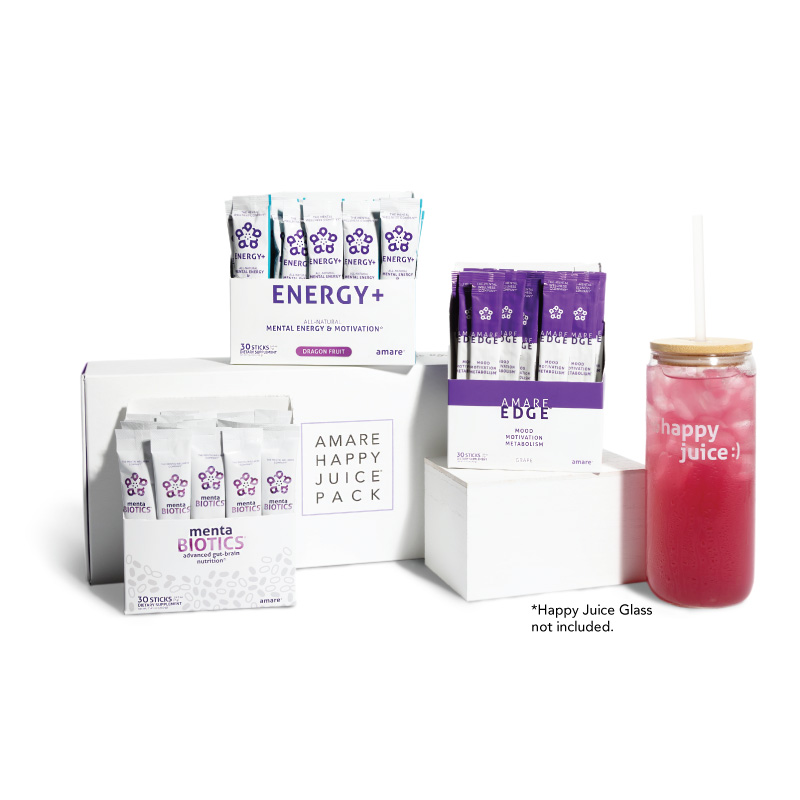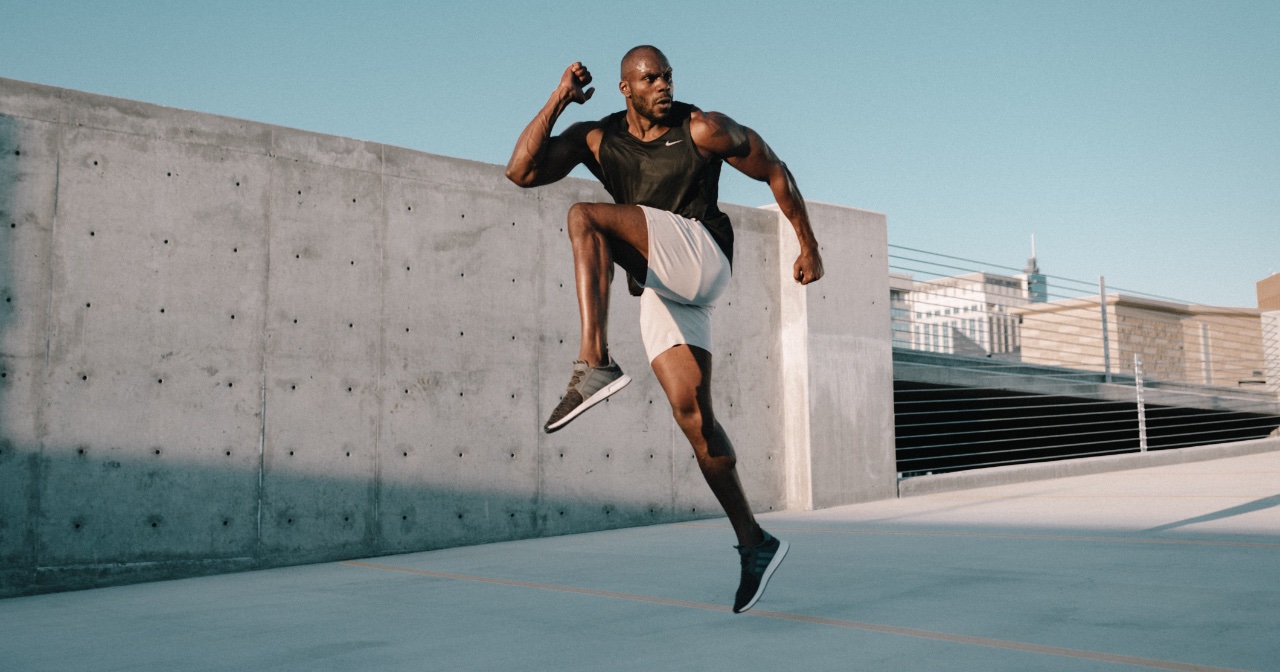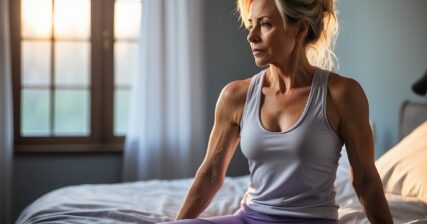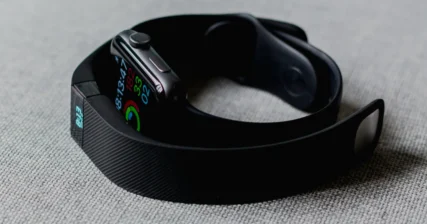Listen on: Apple Podcasts | Spotify
Delayed onset muscle soreness (DOMS). It’s that deep ache in your legs that makes it challenging to sit down without holding onto the arms of a chair, or the pain in your chest when you hug someone in the days following an intense workout.
The good news is, it means you did something in the gym that’ll help build muscle. The bad news is, you might need to endure the pain for a day or two.
In this blog post, I’ve outline what doesn’t work, what might work, and what does work to deal with sore muscles and speed recovery.
What Is Delayed Onset Muscle Soreness?
Delayed onset muscle soreness (DOMS) is the pain, stiffness, and slight swelling you feel in the hours or days following an intense exercise session.
DOMS is classified as a type I muscle strain injury and presents with tenderness or stiffness to palpation and/or movement.”
Cheung K et al. Delayed Onset Muscle Soreness. 2012
It is usually triggered by:
- Starting a new training program after a layoff or for the first time
- Higher-rep or higher-volume training
- Eccentric or ballistic training (weights, downhill running, plyometrics, etc.)
- Any other intense physical activity you might not be accustomed to (golf, moving furniture, gardening, etc.)
The soreness hits you 12-36 hours after your training session or physical activity.
What causes delayed onset muscle soreness?
According to the most current research, there are six possible causes of delayed onset muscle soreness:
- Lactic acid accumulation: Lactate accumulation creates the burning sensation you feel when completing dozens of squats or pushups. Most people feel sore following these types of workouts, which led researchers to believe lactate accumulation contributes to DOMS. However, concentric-only exercise can create significant lactic acid buildup but rarely causes DOMS. Also, you metabolize lactic acid within an hour following training, and DOMS doesn’t even show up for many hours after that.
- Muscle spasm: The muscle spasm theory suggests that your muscles go into a minor spasm following intense training. The microscopic contractions are small, but significant enough to trigger nerves and cause pain, which causes the muscles to spasm even more. Research on this theory is inconclusive.
- Connective tissue damage: Connective tissue wraps your muscle fibers. According to this theory, muscle contraction stretches the connective tissue enough to cause microscopic injury, triggering the soreness. This theory is difficult to prove.
- Muscle damage: The muscle damage theory is the most-accepted of the six opinions, but it probably isn’t the only factor causing muscle soreness. Following intense muscle contraction, components of muscle fibers get damaged. The damage causes an immune response and an increase in enzymes like creatine kinase (CK).
- Inflammation: Inflammation plays a role in any injury in the body, even a minor and beneficial injury like workout-related muscle tissue damage. Proteolytic enzymes break down the damaged tissue, while other inflammatory-related compounds, including bradykinin, histamine, prostaglandins, monocytes, and neutrophils, play other roles. All these inflammatory compounds draw fluid into the muscle, causing inflammation.
- Enzyme efflux: Following damage to the muscle cell, calcium escapes from the damaged sarcoplasmic reticulum, which activates proteases and phospholipases, or proteolytic enzymes. This theory suggests the proteolytic enzymes cause further damage to the area and stimulate pain-related nerves.
In reality, it’s probably a combination of all these theories and then some.
What Doesn’t Reduce Muscle Soreness
Why do I include what doesn’t work?
Like anything else in health and fitness, there are many myths about how to reduce muscle soreness. Though the following offer other health benefits, they don’t reduce muscle soreness according to the research.
- Cryotherapy: When it comes specifically to reducing delayed onset muscle soreness, whole body cryotherapy does not seem to be effective. Neither does ice or ice baths. That’s not to say cryotherapy doesn’t enhance recovery. It just doesn’t reduce muscle soreness.
- Static stretching: It might feel good, but it doesn’t reduce muscle soreness. Also, ballistic stretching could make it worse.
- Ultrasound: Ultrasound uses sound waves to help heat muscle tissue. Cold doesn’t work, and unfortunately, this type of “heat treatment” has mixed results in research as well. If you have ultrasound equipment readily available, give it a try. But don’t go out of your way for an ultrasound treatment to deal with your DOMS.
What Might Reduce Muscle Soreness
The following therapies and tools might be helpful. If they’re easily accessible or you have the extra money to invest in them, they might help, and they definitely won’t make things worse.
- Electrical Stimulation (eStim) or Transcutaneous Electrical Neve Stimulation (TENS): Electrical stimulation causes your muscle fibers to create low levels of contraction. Just as light exercise or movement (which I’ll get to shortly) enhance recovery, electrical stimulation seems to as well.
- Massage: Massage helps increase blood flow to your sore muscles. The research on its effectiveness is mixed. In my opinion, it depends on the therapist. Find a massage therapist with experience working on athletes.
- Compression gear: Compression gear may reduce muscle soreness if you wear it after your training sessions. It may also minimize muscle damage, as measured by creatine kinase levels.
- Fish oil: Omega-3 fatty acids, found in fish oil, support normal inflammation levels. Research shows doses as low as 3 grams per day can help minimize DOMS, though some people may benefit from higher intakes. I use and recommend Thorne Super EPA or Super EPA Pro.
- Foam rolling: I do not recommend foam-rolling pre-exercise, but it may relieve some soreness after exercise or in the days following a tough training session.
- Magnesium: Magnesium is one of the top two nutrient deficiencies, which is why I include it in my Foundational Five. Low magnesium levels may make you more sensitive to pain, so if you’re among the many with low levels, you may feel more sore than necessary. Magnesium also plays essential roles in muscle function and helps improve sleep quality, making it a critical part of your recovery plan. I use and recommend Thorne Magnesium Bisglycinate.

Feel Better Fast. Guaranteed.
Energy+, EDGE, and MentaBiotics make up the Happy Juice supplement stack, with ingredients clinically proven to:
- decrease anxiousness scores by 55%
- decrease irritability scores by 60%
- decrease fatigue by 64%
- decrease anger 54%
- decrease tension by 45%
- decrease confusion by 43%
- decrease overall distress by 49%
- increase good bacteria by 70%
- decrease negative mood by 105%
- increase positive mood by 211%
What Works to Reduce Muscle Soreness
Start with this list (except for the NSAIDs if you don’t need them). If you want to speed up the recovery process and get rid of the muscle pain faster, this is how to do it.
1. Increase protein and/or amino acid intake.
To rebuild muscle efficiently, which is made mainly of protein, you need to eat more protein. If you’re training hard, but not eating enough protein, you’ll consistently experience more DOMS than you should.
You won’t see strength or body composition improvements as quickly, and you’ll have a much harder time recovering in general.
While supplementing with essential amino acids is helpful, you can’t make up significant protein deficits with amino acid supplements alone.
Eat a high-protein diet with at least 1 gram of protein per pound ideal body weight each day. Then, add on the amino acids.
2. Sleep at least seven hours every night.
Your body repairs and rebuilds while you sleep. You secrete your highest growth hormone levels during deep sleep, which occurs in the first third of the night, as long as you’re getting enough consistent quality sleep.
If you choose not to eat enough protein or get enough sleep, the rest of the items on this list might not have much effect.
3. Keep exercising.
DOMS reduces muscle strength. The extent depends on the level of your soreness as well as your training experience.
Your tolerance for muscle soreness depends on your pain threshold. If the most pain you’ve experienced is a stubbed toe or a paper cut, slight amounts of DOMS could feel excruciating.
The more you’ve experienced muscle soreness, the more likely you’ll be able to train hard while feeling some pain. However, you will have less strength in a working muscle that’s still significantly sore from the previous training session.
Going for a PR while you’re dealing with DOMS is a bad idea.
A novice exerciser might fear training with a small amount of soreness, even though exercising is good for them. An experienced athlete might train through a significant amount of pain to his or her detriment.
Exercise may break up adhesions in the previously damaged muscle fibers, helps remove waste products and deliver more oxygen with the increased blood flow, and stimulates endorphin release, which helps block pain signals.
Avoid agility work, sprints, ballistic movements, jumping, and downhill running until most of the muscle soreness is gone.
4. Apply topical menthol.
Menthol is an over-the-counter analgesic pain reliever. You can derive menthol from the essential oils of corn mint, peppermint, and other mints, though much of the commercialized menthol is synthetic.
Topical menthol, applied in a cream or gel dulls nerves that signal pain, while also stimulating the nerves that sense cold, making the affected area feel cool. It also improves joint range of motion after intense exercise.
Because it stimulates cold receptors, some research indicates it could have a performance-enhancing effect when exercising in the heat. Not only that, but the scent is stimulating, as well.
Menthol is a vasodilator, which increases vessel size, but at the same time, reduces arterial blood flow. Though it’s helpful for post-exercise muscle soreness, you can also use it for joint pain, strains, and injuries. Doctors also recommend it for those with migraines, neuropathy, and pain relief from other joint conditions like arthritis.
My favorite menthol-based sports cream is Young Living Cool Azul™ Pain Relief Cream.
5. Take curcumin.
More than 3000 research papers detail the health benefits of curcumin, including the reduction of muscle soreness.
Researchers have completed numerous studies on Meriva®, including a 2014 study that focused specifically on delayed onset muscle soreness. It showed that supplementation with 1 gram per day significantly decreased post-exercise muscle soreness.*
6. Take caffeine or drink coffee.
In addition to being one of the most proven ergogenic aids, caffeine also dulls pain.
Researchers found that a dose of 5 milligrams per kilogram body weight an hour before exercise, and each day for the next four days, had a significant effect on reducing delayed onset muscle soreness.
For a two hundred pound person, that would be about 500 mg of caffeine, or the amount in two tall Pike Place coffees from Starbucks.
It’s one of the many examples of why coffee is good for you.
Or, you could use a caffeine pill, but what would be the fun in that?
Since I don’t recommend anything other than black coffee, creatine monohydrate, or beta-alanine before training, this could be a great way to dull DOMS.
7. If necessary, take a non-steroidal anti-inflammatory (NSAID)
Ibuprofen, aspirin, and other NSAIDs do provide relief from delayed onset muscle soreness, but only under certain conditions, and at a cost. They don’t relieve pain if you take them after the muscle soreness shows up. To be effective, you need to take them before and following training, continuing for about three days.
Under this condition, doses of 400 mg, three times per day of ibuprofen, reduces delayed onset muscle soreness.
Interestingly, higher doses have almost no effect on muscle soreness, which brings me to the potential cost of using NSAIDs. Non-steroidal anti-inflammatories interfere with protein synthesis and delay tissue healing. Creatine kinase (CK) and urea, both markers of protein breakdown, were higher in those using high-dose NSAIDs than those who didn’t use any at all.
As a general rule, I avoid NSAIDs for temporary pain and discomfort as they may compromise tissue healing and muscle growth.
Summary
Building a stronger, healthier, fitter body causes frequent discomfort, periodic soreness, and occasional pain. Of course, so does living a sedentary lifestyle if you give it enough time.
Delayed onset muscle soreness is an inevitable effect of a new or tough training session. It won’t last forever, and you can do a lot to minimize the muscle soreness, including:
- Increase your protein and/or amino acid intake
- Sleep at least seven hours every night.
- Keep exercising.
- Apply topical menthol.
- Take curcumin phytosome.
- Use caffeine or drink coffee.

Feel Better Fast. Guaranteed.
Energy+, EDGE, and MentaBiotics make up the Happy Juice supplement stack, with ingredients clinically proven to:
- decrease anxiousness scores by 55%
- decrease irritability scores by 60%
- decrease fatigue by 64%
- decrease anger 54%
- decrease tension by 45%
- decrease confusion by 43%
- decrease overall distress by 49%
- increase good bacteria by 70%
- decrease negative mood by 105%
- increase positive mood by 211%



